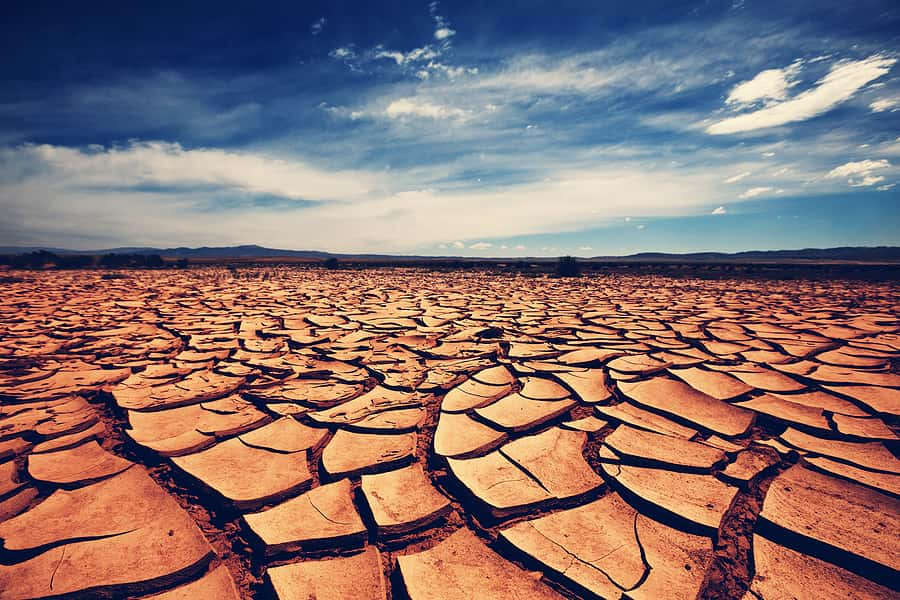News
Summer Drought Fears For England
One of the biggest existential crises facing 21st century society is, of course, the amount of water we have available, with resources around the world dwindling relatively rapidly in the face of pressures such as population growth, pollution, climate change, extreme weather events and urbanisation.
Experts predict that demand will outstrip supply by 40 per cent come 2030, a mere five years away, so urgent action must be taken now to ensure that resilience is built into natural systems and that water systems are able to support life as we know it.
Naturally, this will include pushing through significant improvements to water management practices so that supplies can be delivered even in the face of droughts, which are expected to become more commonplace in the future in line with rising global temperatures.
Hottest spring on record
We’re now halfway through spring and, as the Met Office observes, it’s looking as though a fair few records are going to be broken, in terms of sunshine, rainfall and temperature.
Data up to May 13th shows that this season has been marked by bright skies, dryness and warmth. The mean temperature for spring 2025 is currently 8.77 degrees C, 0.69 degrees C above the seasonal average, making it the eighth warmest spring since 1884 when records began.
It’s also worth bearing in mind that eight out of the ten warmest springs ever have been registered since 2000, while last year set the record for the warmest spring ever, with mean temperatures of 9.37 degrees C.
These warm temperatures are being compounded by a lack of rainfall, with just 80.6mm recorded this spring, which makes it the driest spring in more than 100 years.
As for sunshine, 507 hours have been seen thus far this spring, with the current record of 626 hours set back in 2020.
This in itself is certainly sufficient cause for us all to sit up and take note, as it means that pressure is already being put on water resources and we’ve not even reached summer yet.
But you’ve also got to factor in the dry winter that we’ve just seen, as well, with Met Office stats showing that 11 per cent less rainfall than the long-term meteorological average was seen.
With December the fifth warmest on record for the UK and above-average temperatures seen in February, above-average temperatures for winter 2024/2025 were seen, with mean temperatures of 4.6 degrees C – just over half a degree above the long-term meteorological average.
Why is all this important? Because we need rainfall in winter and in spring to replenish groundwater reserves to help us get through the naturally drier summer months, where we can expect to see even less rainfall than at other times of the year.
Drought warning issued
The government and water firms are now preparing for potential shortages this summer as the dry weather we’re experiencing right now is expected to continue, the Guardian can confirm.
Reservoir levels are now lower than they would usually be at this time of year, compounded by the fact that no reservoirs have been built in England for over 30 years, which makes the country particularly vulnerable if and when droughts occur.
The UK Centre for Ecology and Hydrology, for example, has warned that reservoirs are now ten per cent less full than they should be, with United Utilities seeing particularly low levels (71 per cent capacity). Typically, reservoir sites like Haweswater would be up to 98 per cent full at this time of year.
The Chartered Institution of Water and Environmental Management has observed that if we are to avoid a drought this summer, rainfall would need to be seen at levels last recorded in 2012, which is when significant deluges led to widespread flooding around the country.
A representative told the news source: “Rainfall totals across much of the British Isles have been low since the start of 2025. This has reduced the amount of recharge and refill possible in groundwater and reservoir resources over the 2024/25 winter and left water resources below the levels companies would like to see at the start of the spring/summer seasons.
“The data shows that at present 2025 rainfall is similar to levels last seen in drought events of the last 20 years. It suggests that sustained rainfall, such as that last seen in 2012, would be required to remove the threat of drought this year.”
When reservoir supplies start to dwindle, water is abstracted from local rivers, but given the rising temperatures and lack of rainfall, river flows are now also far below the seasonal average, with nearly every catchment in the UK currently well below what would be considered normal.
Dr Chris White, head of the Centre for Water, Environment, Sustainability and Public Health at the University of Strathclyde, said: “Our water resource infrastructure is generally designed for average conditions, but in a warming climate, what is ‘normal’ is an open question.
“Our water resource infrastructure is not really designed for extremes – both water scarcity and floods – which means we need to rethink how we store, manage and use water better to cope with the full range of events.”
How can businesses reduce their water footprint?
Businesses are particularly well placed to make significant contributions where water usage reduction is concerned, helping to shore up supplies for future generations.
There are many strategies that can be employed to prioritise water efficiency, including rainwater harvesting, greywater use, reuse techniques, water leak detection and repair, automated meter reading and so on.
If you’d like to find out more about such measures and to have a water audit of your site carried out, get in touch with the H2o Building Services team today.
